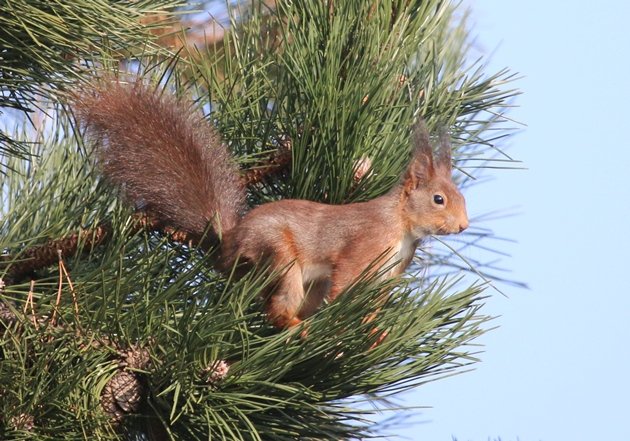
Stop and stay, don’t move that mouse. I still know my audience – this is primarily a blog read by birders in North America, who see the term “squirrel” as little more than a synonym for house sparrow, starling, pest and cholera. But bear with me for a second: this post presents a different context for a different squirrel. This is not about feeder competition and chicken wire. And the squirrel I will post about is indeed what it seems: a cute, little, ferocious, nest-predatory, butt-kicking, cuddly and adorable native critter of Europe, the Eurasian Red Squirrel. And aren’t you glad it is.
Germany, like most of Europe and very much unlike North America, is home to only one species of squirrel. We don’t begrudge you the diversity though, because we have reed warblers and you don’t. Except for Hawai’i, which – by the way – I have never heard come up in trans-Atlantic warbler discussions. Anyway, the Eurasian Red Squirrel. It doesn’t raid bird feeders. Our winter birds are doing fine. I just wanted to get that out of the way before I continue.
As someone already pointed out on the blog that is the sole reason you switch on to the Internet in the morning, the Eurasian Red Squirrel is more arboreal and much more agile than the vast majority of its North American family members. And while it also occurs in city parks and cemeteries within human habitations, it is not quite as tame as the urban Gray Squirrels of America, and I have never been able myself or seen someone be able to hand-feed one. What I have been able to do though is to enjoy the frequent company of one particular Eurasian Red Squirrel which lives next door to my office – literally, as my office is on the third floor and the squirrel’s drey is, too. So to speak.
The view from my office window towards the squirrel trees on the right. The squirrel frequently peeks into our office when it walks along the window sills. Its drey – one of several in the garden – is located a few feet below the tip of the skinny spruce between the two bigger conifers.
It uses the little porch roof seen at the lower left of the previous image to move between the building and the trees.
Which sometimes leads to cool views.
Much like the common squirrels of North America, it does not really hibernate but tends to spend cold snaps all snug and cosy in its drey, waiting for milder days. Since our recent winters have been very mild but notoriously overcast, the terms “cold snap” and “mild” have to be substituted with “dark” and “sunny”. And when February 6th surprised us with a few sunny minutes around noon, I was thus able and grateful to watch my neighbour come out of its drey, preen in the sun, get some exercise and food, and finally retreat again with the returning clouds.
Introducing to you, my valued audience: the squirrel next door.
.

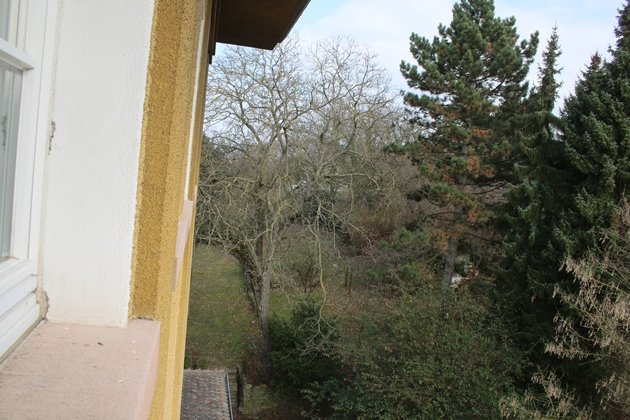
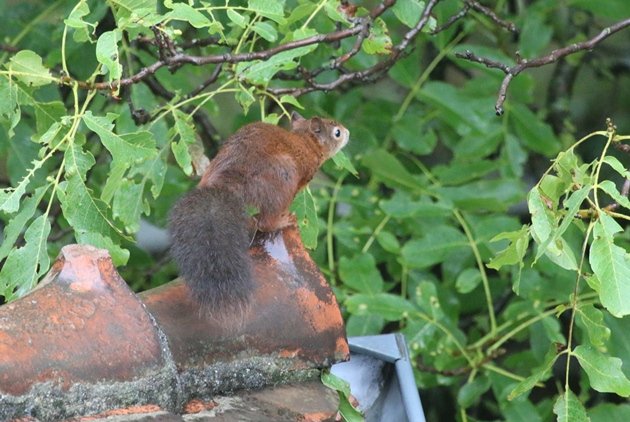
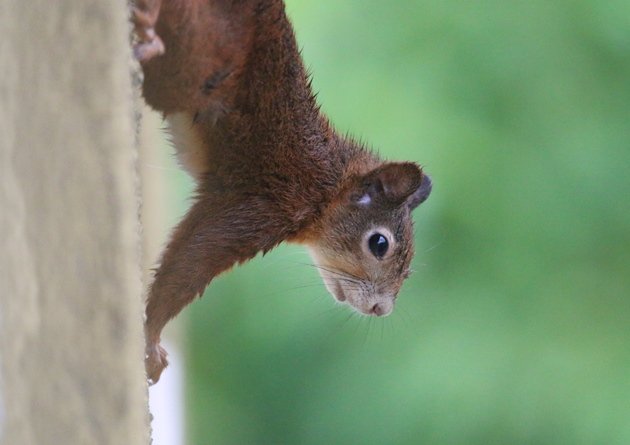
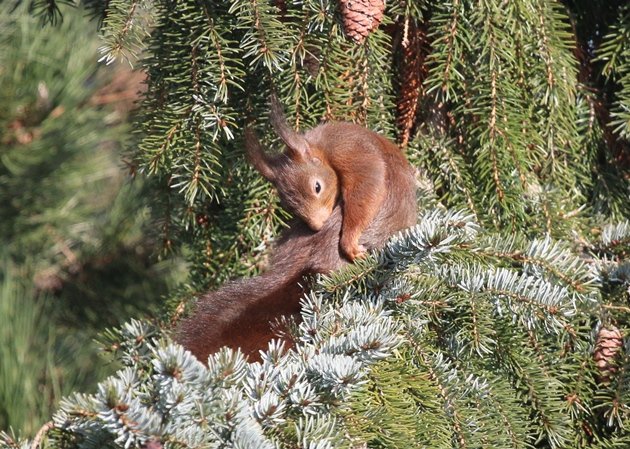
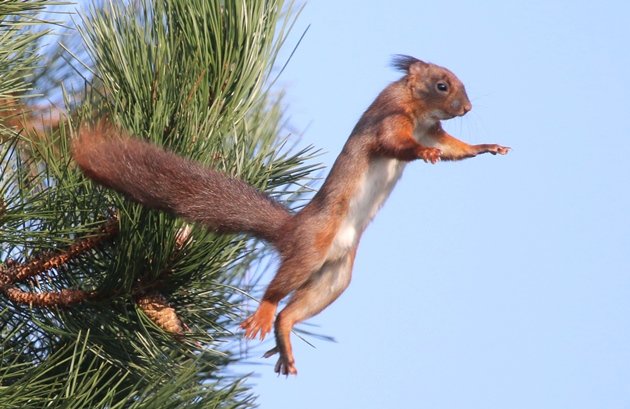
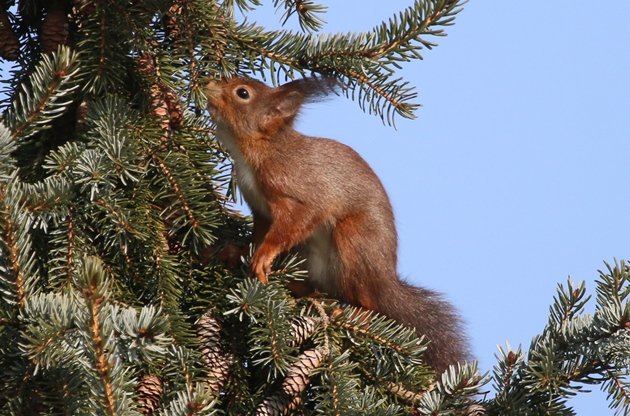
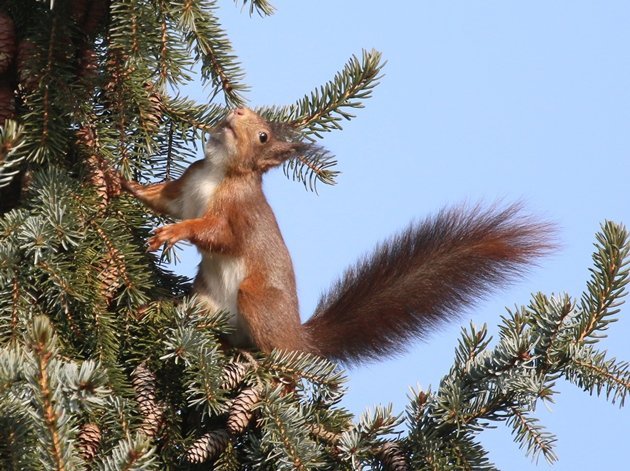
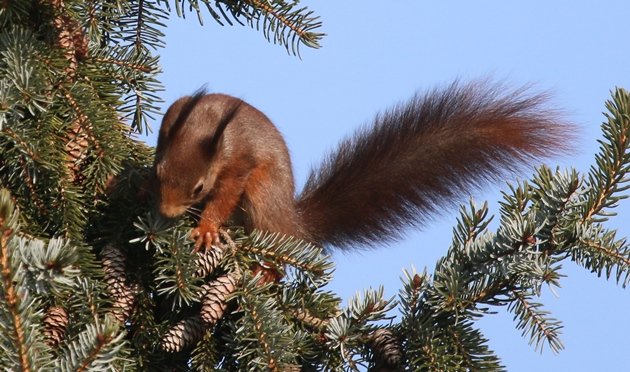
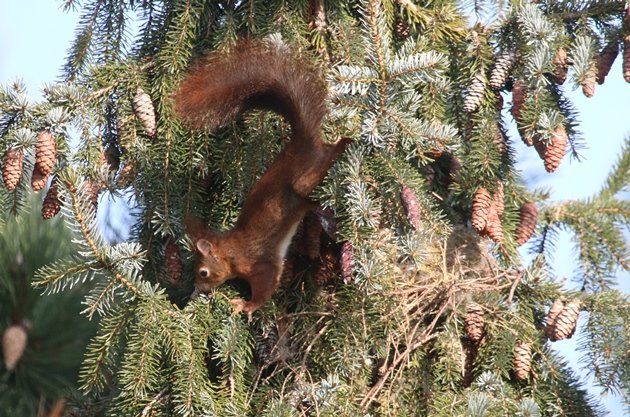
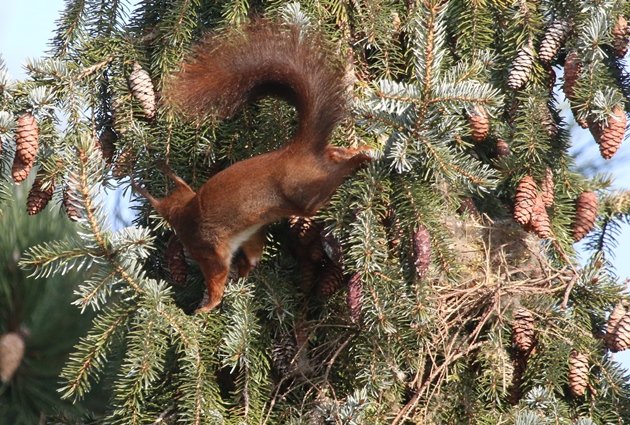
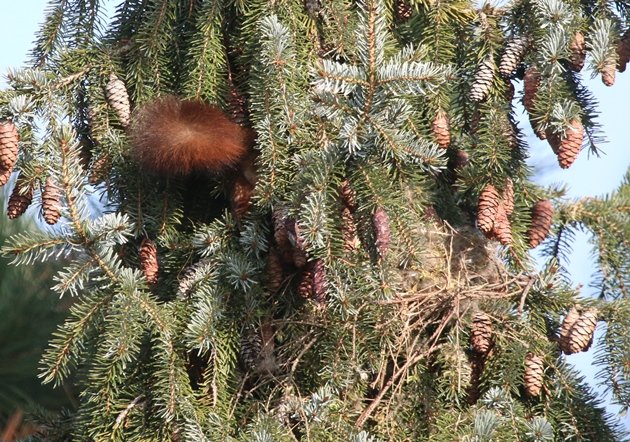
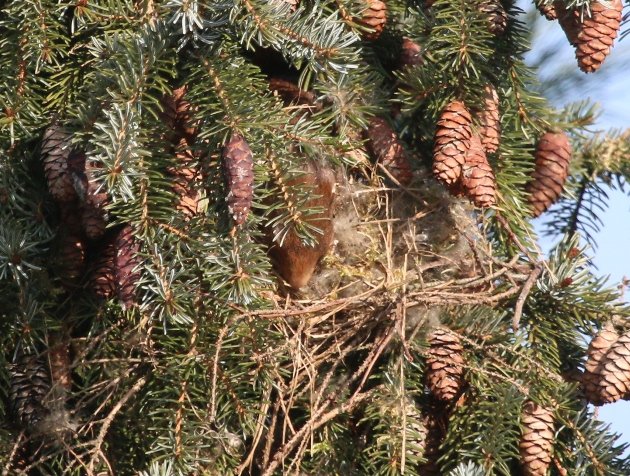










Thanks to the introduced Eastern Grey I have never seen a Red Squirrel. I really should try next time I m back in the UK.
Thanks for showing these amazing pics.
We actually have handfed one of our garden squirrels (we live in NRW near Hamm) for more than two years, but I admit we cheated a little bit. It fell out of its drey as a baby and had a severe wound on its abdomen. Our vet recommended we handraise it with the plan to release it again once it was healed and grown enough, And afterwards it came back and back and back and just wouldn’t go away without at least a treat.
It was infamous for stealing fruit flan off the garden table… 😉
Now this is a squirrel worth watching!
What?!? Geez! I knew it was bad in the UK, but THIS bad already?! Let’s hope they never cross the channel or the Alps from Italy. I want to keep my squirrels.
Oh wow! What a story. Hand-raising a young squirrel must be the cutest thing to do.
You live in Hamm? Nice. My job sometimes takes me to Ennigerloh. You are probably a frequent visitor of the Rieselfelder Münster then?
Greetings from Heidelberg!!
Oh come on! Yours are, too. I really enjoyed having so many squirrels around (both in individuals and species) during my time in Michigan.
Nice work distraction!! 🙂
Work? What work?!
To be honest, the birds are worse. My office is located next to a “mini migration funnel” and endless (1000s) hours of looking out of my window have produced some amazing vagrants, e.g. Glossy Ibis, Long-legged Buzzard and a highlight Bearded Vulture, amongst mor regular “semi-rare” migrants like Red-footed Falcon and Black Stork.
Terrific photos, Jochen. I was so excited to see Red Squirrels in France, they are one of my favourite mammals now!
Thanks, Charlotte! Well, I guess this (together with your invitation to Poland) means that you will now frequently feature in European birding lore?
In the Kalemegdan Park in Belgrade, Serbia, people do hand-feed these squirrels.
This weekend I observed one or possibly even two at the Sava riverbank in my friend’s summer cottage. He was cooking goulash in a cauldron, over the fire, and the little carnivore (well, not really, but yes, they will use the chance for meat when they get it) was checking the cauldron from above. Just to make sure… if there is any chance
Wow, hand-feeding them is remarkable. As I mentioned in the post, I’ve never heard of it. One more reason to visit Serbia, ey?
And I guess the fire was the only factor that kept the squirrel from grabbing the whole cauldron and dragging it up into the canopy… 🙂